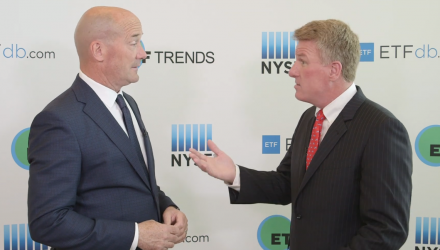Investors who are looking for ways to diversify out of traditional assets, especially during periods of heightened risks, can look to a exchange traded fund strategy that incorporates an “Anti-Beta” style to provide uncorrelated returns to stocks.
“It’s something you put into your portfolio to manage the volatility, the drawdowns. I mean it’s a negative asset beta product,” Bill DeRoche, Chief Investment Officer and Portfolio Manager, AGF Investments, said at Inside ETFs 2019.
“When you combine it with something – your core equity exposure, you can really do dramatic things in managing that drawdown, managing the risk of the portfolio,” he added.
Specifically, the AGFiQ U.S. Market Neutral Anti Beta ETF (BTAL) acts as a more traditional long/short strategy that goes long low beta stocks and short high beta stocks. Consequently, the ETF strategy can produce positive returns any time low beta outperforms high beta.
BTAL provides investors with the means to capitalize on the spread return between low- and high-beta stocks within the S&P Dow Jones U.S. Index. When the market sells off and volatility rises, high-beta stocks tend to sell off more than low-beta stocks. On the other hand, during market recoveries, volatility diminishes and high-beta names outperform low-beta stocks.
During a market pullback, one may expect high beta stocks to underperform low beta stocks, which would help this fund strategy produce a positive return. Even if low beta does not outperform, BTAL likely would not pull back as much as the overall market since half of the portfolio is in a short or bearish position. However, potential investors should keep in mind that there is downside risk, especially during bullish market conditions.
Watch the full interview between ETF Trends CEO Tom Lydon and Bill DeRoche:
For more ETF-related commentary from Tom Lydon and other industry experts, visit our video category.
